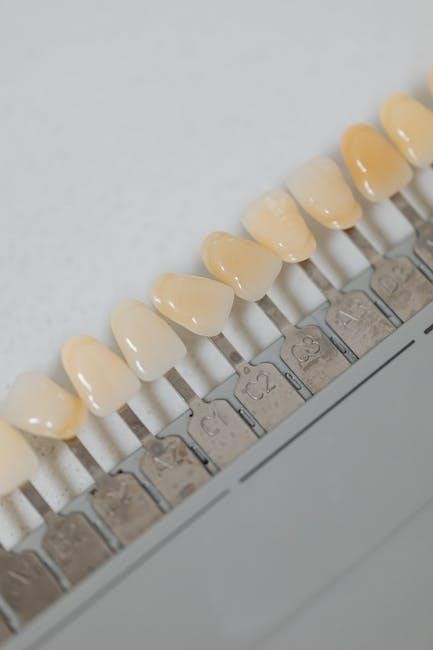The denture teeth mould guide provides a comprehensive approach to selecting and customizing artificial teeth for dentures, ensuring natural aesthetics and optimal functionality. It offers a structured method to match tooth shape, size, and shade to individual patient needs, utilizing tools like the Vita Shade Guide for precise color matching and anatomical harmony. This guide is essential for achieving high-quality, long-lasting denture solutions.
1.1 Overview of Denture Teeth Mould Guide
The denture teeth mould guide is a detailed resource for selecting and customizing artificial teeth, focusing on aesthetic and functional outcomes. It includes various tooth types, such as acrylic, ceramic, and composite, each offering unique benefits like durability, natural appearance, and resistance to wear. The guide emphasizes shade matching using systems like the Vita Shade Guide and provides mould charts for selecting anatomical tooth forms. It also highlights tools like the SR Phonares II FormSelector for precise anterior tooth selection. This comprehensive approach ensures personalized denture solutions, blending technical accuracy with artistic customization to meet individual patient needs.
1.2 Importance of Proper Tooth Selection for Dentures
Proper tooth selection is crucial for achieving both aesthetic and functional success in dentures. It ensures a natural appearance, optimal chewing efficiency, and patient satisfaction. Misaligned or ill-fitting teeth can lead to discomfort, impaired speech, and reduced confidence. Selecting teeth that match the patient’s facial features, bite, and shade guarantees a harmonious outcome. Additionally, the right material choice, such as acrylic or composite, impacts durability and longevity. Proper selection also prevents issues like excessive wear or instability, ensuring the denture functions naturally and enhances the patient’s quality of life.

Types of Denture Teeth
Denture teeth are available in acrylic, ceramic, and composite materials, each offering unique benefits. Acrylic teeth bond well to denture bases, while ceramic options are more durable and resistant to wear. Composite teeth combine aesthetics with strength, providing natural-looking results. Each type is designed to meet specific patient needs, ensuring optimal fit, function, and appearance.
2.1 Acrylic Denture Teeth
Acrylic denture teeth are a popular choice due to their excellent bonding properties with denture bases. They are resistant to crazing, distortion, and blanching, ensuring durability and stability. These teeth are color-stable and match the Vita Shade Guide, offering a natural aesthetic appeal. With a wide range of mould designs, acrylic teeth provide flexibility in selection, catering to individual patient needs. They are cost-effective and widely used in both complete and partial dentures. Their versatility makes them a preferred option for achieving a balanced and functional dental restoration, while maintaining a high level of patient satisfaction.
2.2 Ceramic Denture Teeth
Ceramic denture teeth are renowned for their exceptional durability and resistance to wear and tear. Unlike acrylic options, they are less prone to chipping and offer a more natural aesthetic appeal due to their ability to mimic the light-refracting properties of natural enamel. Ceramic teeth are also more resistant to staining and color fading, ensuring long-lasting vibrancy. They are biocompatible and hypoallergenic, reducing the risk of adverse reactions. While they are more expensive and may require specialized bonding techniques, their superior aesthetics and longevity make them a preferred choice for patients seeking high-quality, natural-looking denture solutions.
2.3 Composite Denture Teeth
Composite denture teeth are crafted from a blend of materials, offering enhanced durability and resistance to chipping and cracking. They provide a natural appearance and excellent shade stability, making them a popular choice for patients seeking both aesthetics and longevity. Composite teeth are less prone to staining and maintain their color over time, ensuring a vibrant smile. Their ability to bond securely to the denture base enhances overall stability and functionality. While they may not be as hard-wearing as ceramic options, composite teeth strike a balance between affordability, aesthetics, and performance, making them a versatile option for various denture applications.
Understanding the Vita Shade Guide
The Vita Shade Guide is a standardized tool used to select denture teeth shades, ensuring natural aesthetics and consistency; It helps match tooth color precisely to patient needs, enhancing outcomes.
3.1 Vita Shade Guide for Denture Teeth
The Vita Shade Guide is a widely used tool for selecting denture teeth shades, offering a range of options to match natural tooth colors. It provides standardized shade tabs, from A1 to D4, ensuring consistent and accurate shade selection. This guide helps achieve aesthetic consistency and patient satisfaction by allowing precise matching of denture teeth to the patient’s natural tooth color. Its organized structure simplifies the selection process, reducing guesswork and enhancing the final aesthetic outcome of dentures.
3.2 Matching Denture Teeth to Natural Shade
Matching denture teeth to the patient’s natural shade ensures a seamless and aesthetically pleasing result. The process involves careful colorimetric analysis, using tools like the Vita Shade Guide, to select teeth that align with the patient’s existing dental appearance. This step is crucial for maintaining harmony between artificial and natural teeth, enhancing the overall aesthetic appeal of the denture. Proper shade matching also boosts patient confidence, as it creates a natural-looking smile. The accuracy of this process significantly impacts the success and satisfaction of the denture treatment, making it a cornerstone of modern denture aesthetics and patient care.
Tooth Mould Selection Process
The tooth mould selection process involves choosing the right anatomical tooth form and size based on the patient’s facial features and aesthetic preferences, ensuring optimal denture aesthetics and functionality.
4.1 Factors Influencing Mould Selection
The selection of denture tooth moulds is influenced by several factors, including the patient’s facial features, tooth shade, durability, and aesthetic preferences. The Vita Shade Guide aids in color matching to ensure natural aesthetics. Moulds resistant to crazing and abrasion are preferred for longevity. Additionally, the ability to bond well with the denture base and customization options play significant roles. Advances in digital libraries and CAD/CAM technology further enhance mould selection by offering precise and varied choices, catering to individual patient needs effectively and ensuring optimal satisfaction.
4.2 Mould Charts for Denture Teeth
Mould charts are essential tools for selecting denture teeth, offering a wide range of anatomical tooth forms, sizes, and shades. These charts guide professionals in choosing teeth that harmonize with the patient’s facial features and oral anatomy. They often include options for natural aesthetics, durability, and customization. Advanced mould charts are now available digitally, integrating with CAD/CAM systems for precise selection. Additionally, systems like the FormSelector allow for targeted tooth mould selection based on patient-specific criteria. This ensures a tailored approach to denture fabrication, enhancing both functionality and patient satisfaction.
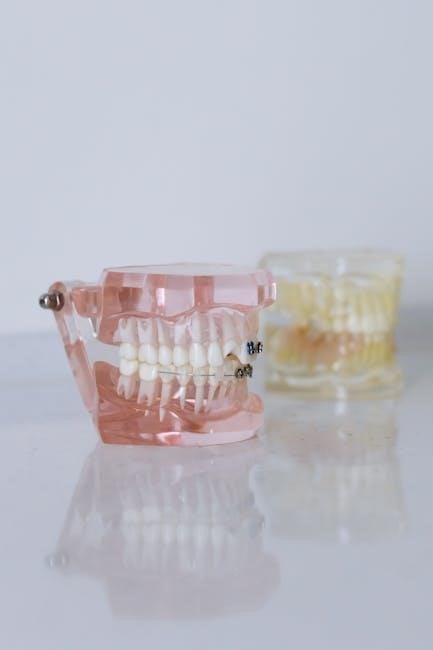
Anatomical Considerations for Denture Teeth
Anatomical considerations focus on matching tooth form, size, and arrangement to the patient’s oral anatomy and facial structure. Proper alignment ensures natural aesthetics and functionality, enhancing comfort and chewing efficiency.
5.1 Tooth Form and Size
Tooth form and size are critical for achieving natural aesthetics and functionality in dentures. The mould guide helps select teeth that align with the patient’s oral anatomy, ensuring proper fit and harmony. Tooth size must complement the patient’s facial features, while the form should mimic natural dentition for chewing efficiency. Mould charts provide standardized options, allowing for customization based on individual needs. Proper selection enhances both comfort and aesthetics, ensuring dentures appear lifelike and function seamlessly.
5.2 Harmony with Patient’s Facial Features
Harmony with the patient’s facial features is essential for natural-looking dentures. The mould guide helps select teeth that complement the patient’s facial structure, ensuring a balanced and aesthetic appearance. Tooth shape, size, and arrangement should align with the individual’s oral anatomy and facial proportions. Mould charts offer diverse options to match various facial types, from soft to bold forms. Proper selection enhances facial symmetry and restores the patient’s natural smile, providing both functional and aesthetic satisfaction. This customization ensures dentures blend seamlessly with the patient’s overall appearance, improving confidence and quality of life.

Digital Solutions in Denture Tooth Moulding
Digital solutions enhance denture tooth moulding through CAD/CAM technology and digital mould libraries, ensuring precision, consistency, and efficiency in creating customized teeth for optimal patient fit.
6.1 CAD/CAM Technology for Denture Teeth
CAD/CAM technology revolutionizes denture tooth moulding by enabling precise digital design and fabrication. It streamlines the process of creating customized teeth, ensuring accurate fit and aesthetics. Digital libraries offer a wide range of tooth moulds, allowing for personalized selection based on patient anatomy. This technology enhances efficiency, consistency, and patient satisfaction, while reducing manual errors. Tools like 3Shape and exocad integrate seamlessly, enabling dentists to design and fabricate high-quality denture teeth with ease. CAD/CAM solutions are transforming the field, offering cutting-edge advancements for modern denture tooth moulding.
6.2 Digital Mould Libraries and Selection Tools
Digital mould libraries and selection tools streamline the process of choosing denture teeth, offering vast collections of anatomically accurate tooth designs. These tools enable precise matching of tooth shape, size, and shade to patient needs. Advanced software, such as 3Shape and exocad, provides access to detailed mould charts and shade guides, like the Vita Shade Guide, ensuring optimal aesthetics. Digital libraries simplify customization, allowing for faster and more accurate selections. Tools like the SR Phonares II FormSelector further enhance efficiency. This digital approach reduces errors and improves patient satisfaction, making it a cornerstone of modern denture tooth moulding.

Fabrication Process of Denture Teeth
The fabrication process involves shaping and bonding denture teeth using materials like acrylic, ceramic, or composite. Advanced techniques, such as injection molding or CAD/CAM, ensure precise and durable results.
7.1 Material Options for Denture Teeth
Denture teeth are fabricated from various materials, each offering unique advantages. Acrylic teeth are cost-effective and easy to adjust, while ceramic options provide superior aesthetics and durability. Composite materials combine strength and natural appearance, resisting wear and tear. Portrait IPN and SR Phonares II are popular choices, known for their high-quality aesthetics and durability. These materials are bonded to the denture base using specialized resins, ensuring a secure and long-lasting fit. The choice of material depends on patient needs, budget, and desired outcomes, with modern options catering to both functionality and aesthetic preferences.
7.2 Bonding Teeth to Denture Base
Bonding artificial teeth to the denture base is a critical step in ensuring stability and longevity. Specialized resins are commonly used to secure the teeth, providing a durable and fracture-resistant bond. The process involves preparing the tooth surfaces and base to enhance adhesion, often through mechanical retention or chemical bonding agents. Proper bonding prevents movement and wear, ensuring optimal functionality and aesthetics. Modern techniques and materials, such as high-strength acrylics, have improved bonding outcomes, offering patients a secure and natural-looking denture solution.
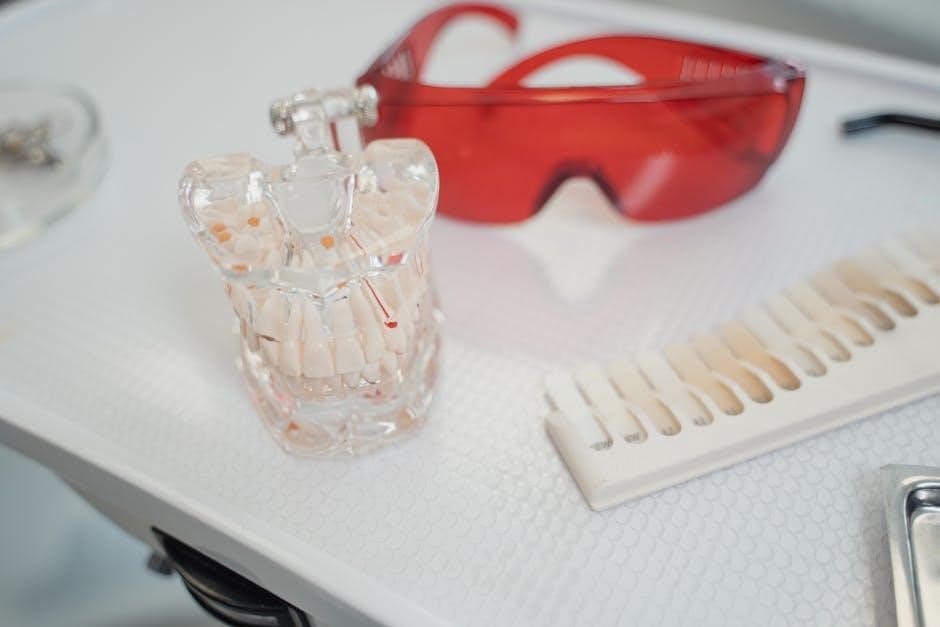
Aesthetic Considerations
Aesthetic considerations focus on achieving natural-looking dentures through shade matching, tooth form selection, and facial harmony. Customization ensures personalized results, enhancing patient satisfaction and confidence in their appearance.
8.1 Customization of Denture Teeth
Customization of denture teeth involves tailoring their shape, size, and shade to match individual patient aesthetics. Mould charts and shade guides, like the Vita Shade Guide, help achieve natural results. Advanced materials, such as acrylic and composite, offer durability and aesthetic appeal. Personalized options include tooth form selection, enamel shading, and incisal edge detailing. This process ensures harmony with the patient’s facial features and smile preferences, enhancing overall satisfaction. Customization addresses unique needs, providing realistic and attractive denture solutions that restore confidence and improve quality of life.
8.2 Characterization and Personalization
Characterization and personalization of denture teeth involve adding unique details to enhance realism and individuality. Techniques include staining, enamel shading, and incisal edge shaping to mimic natural teeth. Advanced materials like composite teeth allow for intricate customization. Digital tools and mould charts guide precise adjustments, ensuring teeth align with the patient’s facial features and smile preferences. Personalization extends to tooth form selection and color matching using guides like the Vita Shade Guide. This tailored approach ensures dentures look natural and boost patient confidence, offering a harmonious blend of aesthetics and functionality tailored to each individual’s needs.
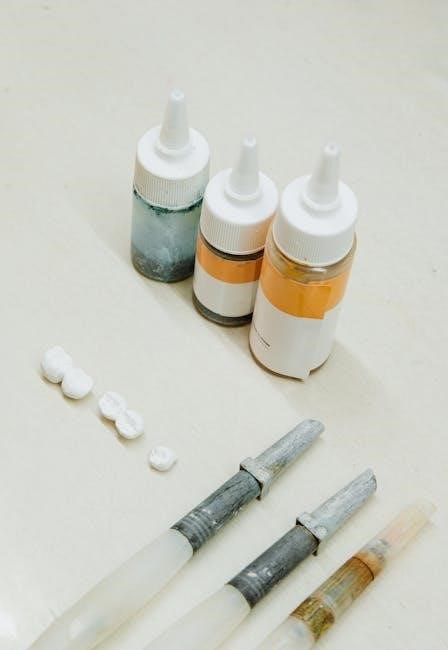
Clinical Procedures for Denture Moulding
Clinical procedures involve precise border moulding and impression techniques to ensure accurate fit and functionality. Proper fitting and alignment are critical for patient comfort and denture longevity.
9.1 Border Moulding Techniques
Border moulding techniques are essential for achieving an accurate fit of dentures. The process involves shaping the denture borders to match the patient’s oral anatomy, ensuring proper retention and stability. Two primary methods are used: the compressive technique, which applies impression material to the borders, and the selective pressure technique, which focuses on specific areas. Proper border moulding ensures the denture base accurately adapts to the patient’s tissues, providing optimal functionality and comfort; These techniques are critical for the success of the denture fabrication process and patient satisfaction.
9.2 Impression and Fitting Process
The impression and fitting process is a critical step in denture fabrication, ensuring a precise fit and optimal functionality. It begins with taking preliminary impressions of the patient’s mouth to create a custom tray. Final impressions are then captured using materials like silicone or polysulfide, focusing on accuracy and detail. The try-in appointment involves testing the denture base and teeth arrangement, allowing for adjustments to ensure proper fit, aesthetics, and occlusion. Accurate impressions and fittings are vital to avoid issues like instability or discomfort, ensuring the denture meets the patient’s needs for both function and appearance.
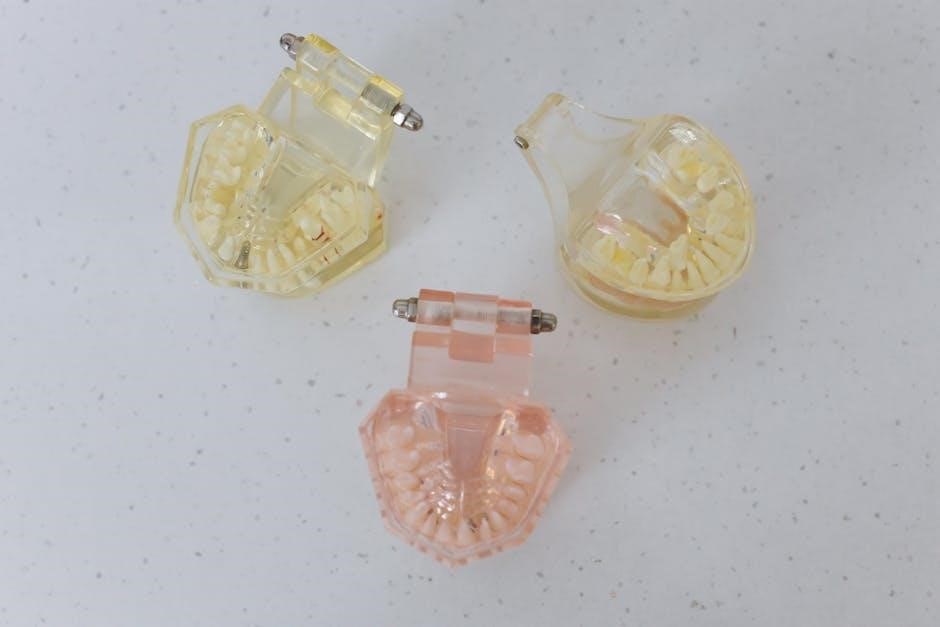
Maintenance and Care of Denture Teeth
Regular cleaning with mild detergents and soft brushes is essential. Avoid harsh chemicals and abrasive materials to prevent damage. Soak dentures overnight and handle them gently to maintain longevity and hygiene.
10.1 Cleaning and Hygiene Practices
Proper cleaning and hygiene are crucial for maintaining denture teeth. Use mild detergents and soft-bristled brushes to remove plaque and stains without damaging the material. Avoid harsh chemicals or abrasive cleaners, as they can scratch or discolor the teeth. Soak dentures in water or a cleaning solution overnight to maintain freshness. Rinse thoroughly before reinsertion. Regular cleaning prevents bacterial buildup and ensures a fresh, healthy smile. Handle dentures gently to avoid chipping or breaking. Professional dental check-ups are also essential for long-term maintenance and care.
10.2 Repair and Replacement of Denture Teeth
Timely repair or replacement of damaged denture teeth is essential to maintain functionality and aesthetics. Minor chips or cracks can often be repaired chairside using dental resins. For more extensive damage, the denture may need to be sent to a dental laboratory for professional restoration. Worn-out teeth can lead to chewing difficulties and aesthetic concerns. Replacement involves selecting new teeth that match the original shape, size, and shade using mould guides. Regular dental check-ups help identify issues early, ensuring optimal denture performance and patient satisfaction. Proper care extends the lifespan of denture teeth, maintaining both comfort and appearance.
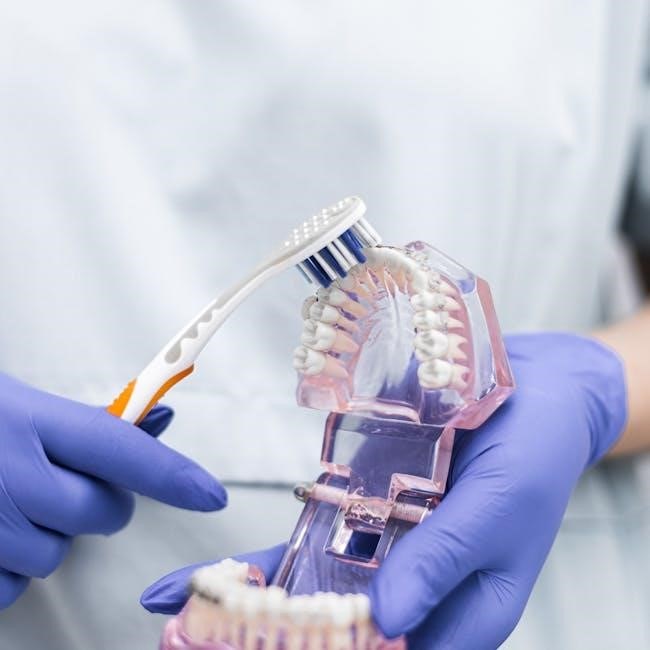
Case Studies and Success Stories
Real-life examples demonstrate the effectiveness of the denture teeth mould guide in achieving natural aesthetics and functionality. Patients report improved confidence and satisfaction with personalized results.
11.1 Successful Outcomes with Denture Teeth Mould Guide
Case studies highlight the denture teeth mould guide’s role in achieving exceptional patient outcomes. Patients report enhanced aesthetics, comfort, and functionality, with natural-looking results. The guide ensures precise shade matching and anatomical harmony, boosting confidence. Advanced materials like SR Phonares II and Portrait IPN deliver durability and lifelike appearance. Clinicians appreciate the streamlined selection process, leading to consistent success. These real-world examples demonstrate how the guide bridges functionality and aesthetics, creating personalized, high-quality denture solutions that meet patient expectations and improve quality of life.
11.2 Patient Satisfaction and Aesthetic Results
Patient satisfaction with denture teeth mould guides is notably high due to their ability to deliver natural aesthetics and personalized results. The guide ensures teeth align with the patient’s facial features and skin tone, creating a harmonious appearance. Advanced materials like SR Phonares II offer durability and a natural look, enhancing patient confidence. Clinicians report high success rates, with patients praising the comfort and lifelike aesthetics. Customization options allow for tailored solutions, making dentures virtually indistinguishable from natural teeth. This blend of functionality and aesthetics leads to overwhelmingly positive feedback and improved quality of life for patients.
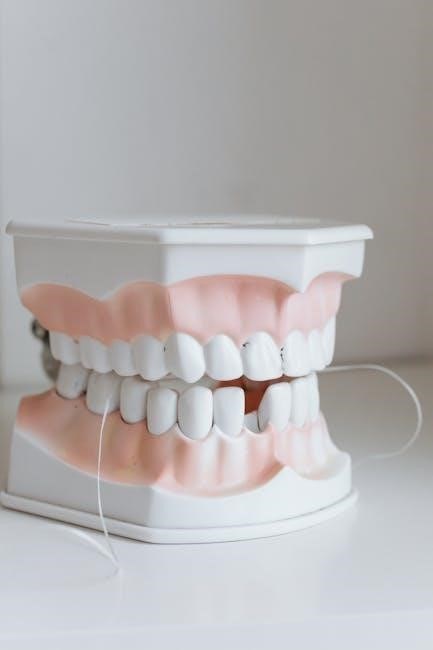
Future Trends in Denture Teeth Moulding
Future trends include advancements in material science, AI integration for precise tooth selection, and digital mould libraries, enhancing customization and efficiency in denture tooth moulding processes.
12.1 Advancements in Material Science
Advancements in material science are revolutionizing denture teeth moulding with high-performance materials offering enhanced durability, aesthetics, and biocompatibility. Nano-ceramics and composite resins provide superior strength and natural appearance. Self-cleaning surfaces and antimicrobial properties reduce maintenance and improve oral health. These innovations ensure denture teeth are more lifelike, resistant to wear, and compatible with modern digital fabrication techniques. Such advancements are paving the way for next-generation denture solutions that prioritize patient comfort, functionality, and long-term satisfaction.
12.2 Integration of AI in Denture Tooth Selection
The integration of AI in denture tooth selection is transforming the process by enabling precise, data-driven decisions. AI algorithms analyze patient data, facial features, and dental anatomy to recommend optimal tooth moulds and shades. Digital libraries of tooth forms and shades are now accessible through AI platforms, streamlining the selection process. Advanced systems also predict aesthetic and functional outcomes, reducing human error. AI tools, such as automated shade matching and 3D modeling, enhance customization and patient satisfaction. This technology ensures faster, more accurate results, marking a significant leap forward in modern denture tooth moulding practices.
